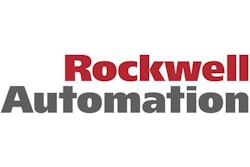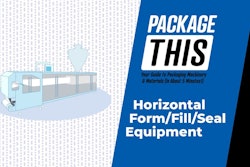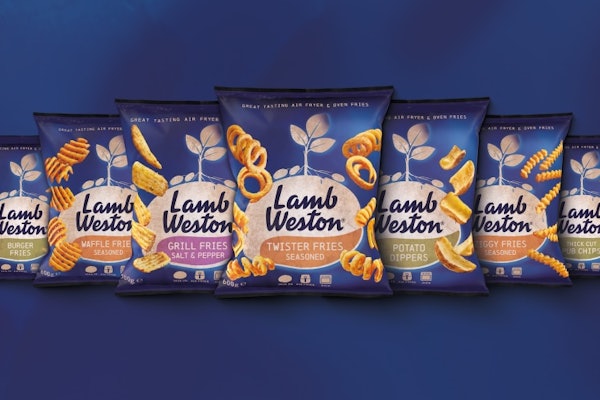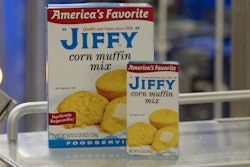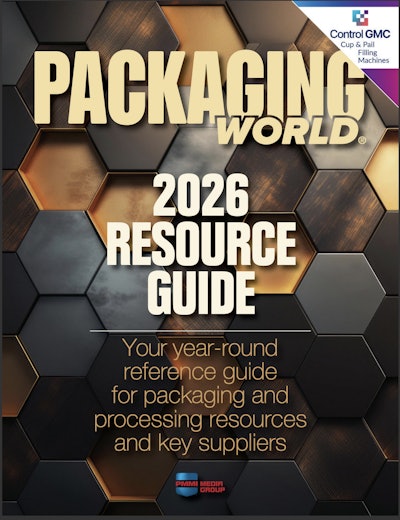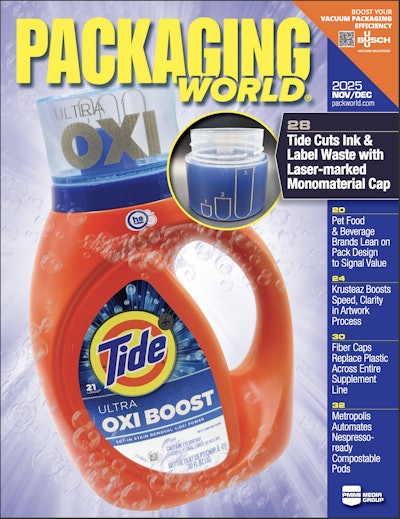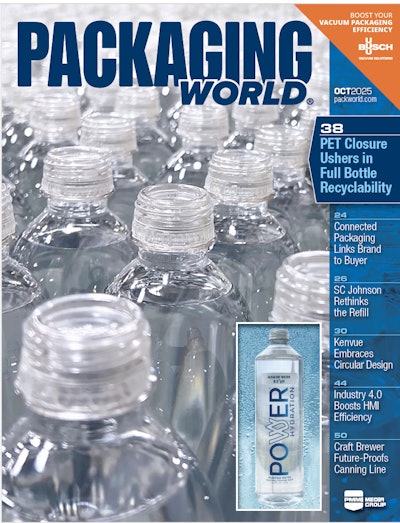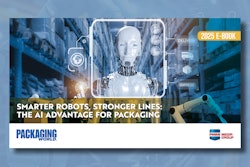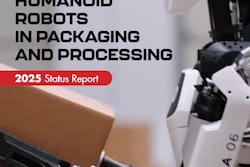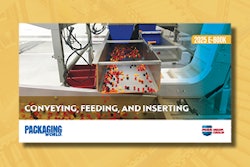To many process engineers, packaging equipment can look like something from another planet. Often the controls part of a machine can be rudimentary in their view, and troubleshooting machines from many suppliers can be a headache to figure out. On the other hand, information technology (IT) engineers view both the equipment and control sides of the manufacturing equation as black boxes as they try to siphon out important real-time data to feed their business systems. The plant floor difficulties can lead to extended downtime as companies reduce staff, requiring engineers to assume responsibility for more production areas. The IT difficulties can cause lost profits due to increased inventory, delayed shipments or raw materials shortages.
But solutions to those dilemmas may be just around the corner. They hinge on the development of standard ways of defining machines, processes, programming, and data. The promise: easy data connectivity from process to packaging to enterprise, consistent operator interface and diagnosis methods, and, in the end, improved profits for manufacturers and their equipment suppliers.
Engineers involved in batch processing have developed—under the auspices of the Instrumentation, Systems and Automation Society (ISA)—a standard adopted by the American National Standards Institute (ANSI) known as ANSI/ISA S88. This standard identifies tag names and process “states” in a model that can be adopted by users and suppliers of batch automation processes. Another group developed ANSI/ISA S95, a standard that models data communications between the batch process and manufacturing execution system (MES) application software.
Usage migrates
Meanwhile, the OMAC Packaging Workgroup, part of the Open Modular Architecture Control Users Group (OMAC), has developed PackML, a subset of S88 for packaging that defines a state diagram for packaging machines and standard tag names for data.
Mike Lamping is a technology leader at Procter & Gamble, a Cincinnati consumer packaged goods manufacturer working with converting equipment. Lamping notes that many converting machinery manufacturers moved their designs from mechanical line shafts to electric servo control during the 1990s. “We have many things in common with modern packaging machinery. For instance, converting machines are also built in modules. The PackML model is not all that far from converting, probably just requiring some redefined states,” he adds.
Right now, there is very little communication in effect between converting and packaging, Lamping says. But it would be helpful to use the state model for converting. “When you are troubleshooting a machine, the model directs you to the right section of code,” he notes.
Even though bringing all the standards together in an enterprise-wide solution is very new, there are companies that are now reaping the benefits of implementing the strategy.
“We have been able to reduce our overall inventory value by up to 30 percent and achieve a flow of better and faster management information,” says Paul Bloemen, director of ICT, Brouwerij Martens, following the implementation of a three-phase business and production strategy at the Belgian-based brewers. Privately owned since 1758 and based in Bocholt, Belgium, Brouwerij Martens produces 10 basic beers within a portfolio of 200 finished products.
Wishes for projects
The brewery constructed an ambitious wish list for a new project. Among its goals were increasing business and production efficiency, reducing time to market, exposing product cost structures, enhanced management information, integrating the supply chain from vendors to customers, and standardizing technology that enables collaboration and traceability.
The first thing the company did was to install an enterprise resource planning (ERP) application in order to automate production planning, purchasing, manufacturing information, product costing, quality control and recipe management, along with sales and other financial information. For example, Martens bases its production schedule on sales forecasts eight weeks ahead. This information must be communicated in terms of raw material and packaging requirements. An automated Invensys Protean ERP system provides the relevant data in a form usable by each function, enabling the brewery to optimize stock levels, capacity and manpower.
The next step of the project was to automate Martens’ plant-floor system to provide for seamless integration. The existing system included a variety of equipment from different suppliers and different technology vintages. Production data was entered into the ERP system manually.
Martens went with the S88-based Invensys Batch Management System in order to develop or refine recipes for new products very rapidly without modification to the PLC programs. Production schedules and their required resources (material and equipment), as planned in Martens’ ERP system, are automatically downloaded and inserted into the batch management schedules to start at the planned time, based on optimum equipment availability.
Martens built its plant-floor-to-business integration on the ISA S95 standard. It used the Invensys interfaces developed using eXtensible Markup Language (XML) to send messages to the business/ERP system, Microsoft BizTalk server, and the Invensys Production Server. The S95 standard paves the way for easier collaborative production management, using consistent models and language.
Flexible filler
The application of standards can pay off for vendors as well. One case in point is Tevopharm B.V. Founded in 1959 in Schiedam, The Netherlands, Tevopharm manufactures horizontal form/fill/seal machines for packaging of chocolate and bar products, biscuits, candies, and pharmaceutical products. In recent years, engineers at the company noticed that changes in consumer behavior included a desire for smaller portions of food available in a wider variety of packages. These trends, along with stricter hygiene demands, propelled interest in flexible automated packaging lines among consumer packaged goods companies.
While designing a new machine to meet these changing customer requirements, Tevopharm engineers decided to build upon industry standards. On the software side, these include IEC 61131-3 programming languages with the latest motion control function block from PLCopen and PackML. Tevopharm’s engineers used the IEC 61131-3 standard because any customer already familiar with programs written to the standard can easily understand the program structure and commands, due to their consistent look and feel. The structure of the program remains, even if the hardware changes.
The first result, the Tevopharm Pack-300CA Flow Wrapper machine, uses modern servo technology programmed with the PLCopen motion control function block. This function block operates within the main machine control, eliminating a separate motion program. The machine’s three servo drives operate as a “virtual line shaft.” This maintains a traditional concept to the machine while incorporating the flexibility offered by servo automation technology.
A company like Tevopharm, which maintains worldwide operations and supports multiple platforms as requested by various customers, finds standardization a cure for high software costs, high training costs, long debug and startup times, and high maintenance costs. After completion of its standardization process, Tevopharm discovered a large improvement in software quality and a reduction in all the associated costs.
How the cheese slices
What do you do when you are a large processed cheese manufacturer with a reputation to uphold and you can’t guarantee that your raw materials have a consistent quality? Toronto-based systems integrator Cougar Automation Technologies faced the challenge from one customer with an answer drawn from software experience and the use of standards.
Cougar’s customer had both a plant-floor problem and a “back-office” problem. The company obtained ingredients from other dairy plants it owned to blend into its cheese product: cheese slices for restaurants and grocery chains. The problems were not specific to the actual process or packaging lines, but with the inconsistent quality of ingredients going in, as well as with ERP integration. The company’s existing 10-year-old computer integrated manufacturing system was at the end of its lifecycle. In other words, it just wasn’t keeping up with the demands of production.
The plant floor problem was maintaining an accurate inventory that would assure supplies for each production run. Since the ingredients coming into production were not consistent, operators were required to custom-blend each batch to assure a consistent quality product. This caused inventory inconsistencies if the quantities were not updated in real time.
Further, the company had implemented an ERP system from SAP within the previous two years. Managers were anxious to realize a return on that investment. But data had to be entered manually into the SAP system from the existing computer integrated manufacturing system, causing delays and inaccuracies.
Craig Smith, vice president of new projects at Cougar, details yet another challenge laid out by the customer. “They insisted that they did not want a ‘one-off’ solution on this project,” says Smith.
Blending a solution
The company had existing PLC 5 controllers from Milwaukee-based Rockwell Automation, the SAP system, and information technology products from IBM. Blending those ingredients, Cougar mixed up a batch of real-time connection of factory floor information to the SAP system. Smith states, “There were unique bar code labels on the barrels of raw materials. The system we designed reads the information from them and relays it wirelessly to the PLC. The information goes through the PLC to the batch software system, also from Rockwell Automation. From there, it enters the SAP system modules for inventory, production orders and the like. We are tracking ingredients by particular batch.”
To move information from the batch process to SAP, Cougar chose WebSphere from IBM. This application is capable of bi-directional communication using OPC, an open connectivity standard. Since the customer already had IBM products, the IT department embraced the use of WebSphere. According to Smith, “IBM has a cost structure for WebSphere that is more bearable for manufacturing.”
The final project encompassed “out-of-the-box” applications from Rockwell Automation and IBM using an open communication standard in order to improve quality and profitability at this food manufacturer.
As engineers collaborate on standards for machines and manufacturing processes, business managers are discovering tangible benefits.
See sidebar to this article: What’s In It for the OEM?





